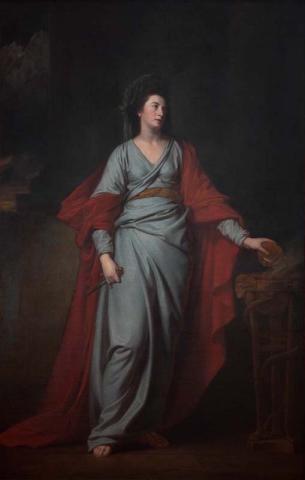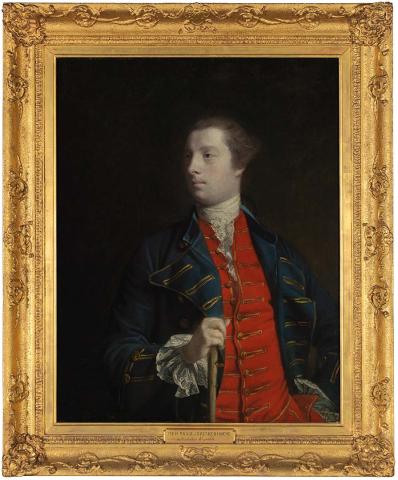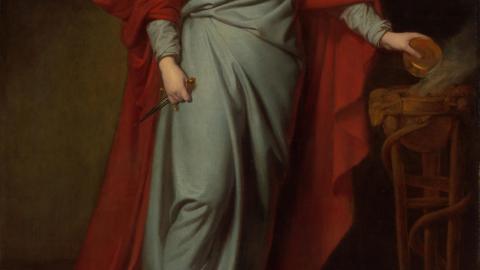Romney’s portrait of a tragic star
George Romney was one of the most successful portraitists of the late eighteenth century, and his work is found in significant collections across the globe. His sitters, who were predominantly female, were often leading social figures or celebrities.
Mary Ann Yates (1728–87) was a successful figure in Georgian theatre who was nearly 20 years into her acting career at the time of this portrait. Well known for her roles as Shakespearean heroines, she was a regular at Theatre Royal, Drury Lane. Here, Romney has portrayed her as Melpomene, one of nine muses in Greek mythology. The muse of tragedy, Melpomene’s attributes include a tragic mask, a wreath of ivy or cypress, a sword or dagger, and sceptres at her feet or a crown in her hand.

Shown in three-quarter profile, Mrs Yates’s gaze is fixed beyond her audience as she clasps a small dagger. She is both resplendent and calm in her neoclassical garb, apparently in control of her role as she adopts the contrapposto pose of a classical sculpture rather than the fluid, emotional gesture one might expect from an actress. She not only plays the role of mythic muse but also performs herself. In Romney’s portrait, Mrs Yates enacts a stately, almost ethereal, version of herself, far removed from the frivolous reputation of actresses in the eighteenth century.
Mary Ann Yates died at the age of 59, two years after retiring from the stage, and was succeeded by Sarah Siddons, an actress painted by Joshua Reynolds in the role of Melpomene in 1783. In her lifetime, Mrs Yates was a muse to several artists, including Johan Zoffany, Ozias Humphry and William Dickinson (below).
Complete with its rococo-style gilded frame, Romney’s Mrs Yates as the Tragic Muse, Melpomene 1771 (pictured above) was donated to QAGOMA in 1988 by Lady Trout.

William Dickinson / England c.1746–1823 / Mrs Yates in the Character of Medea 1771 / Mezzotint / 61.9 x 48.9cm / Collection: The Metropolitan Museum of Art, New York / Public domain
Related works








